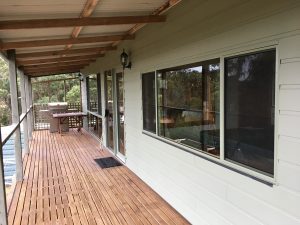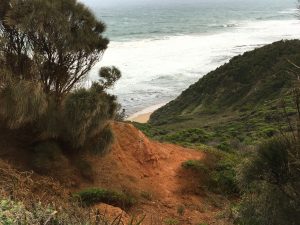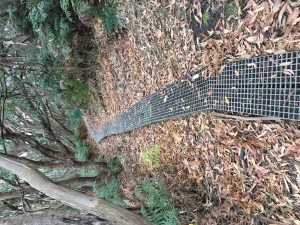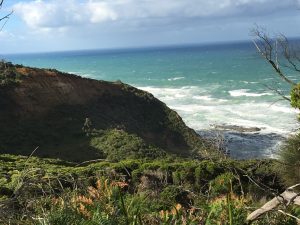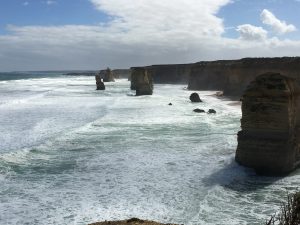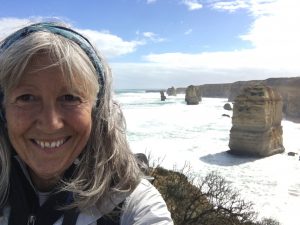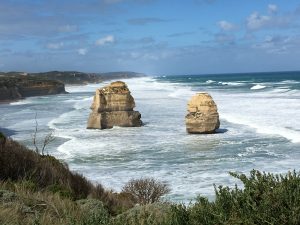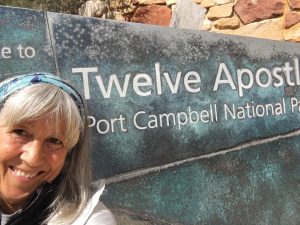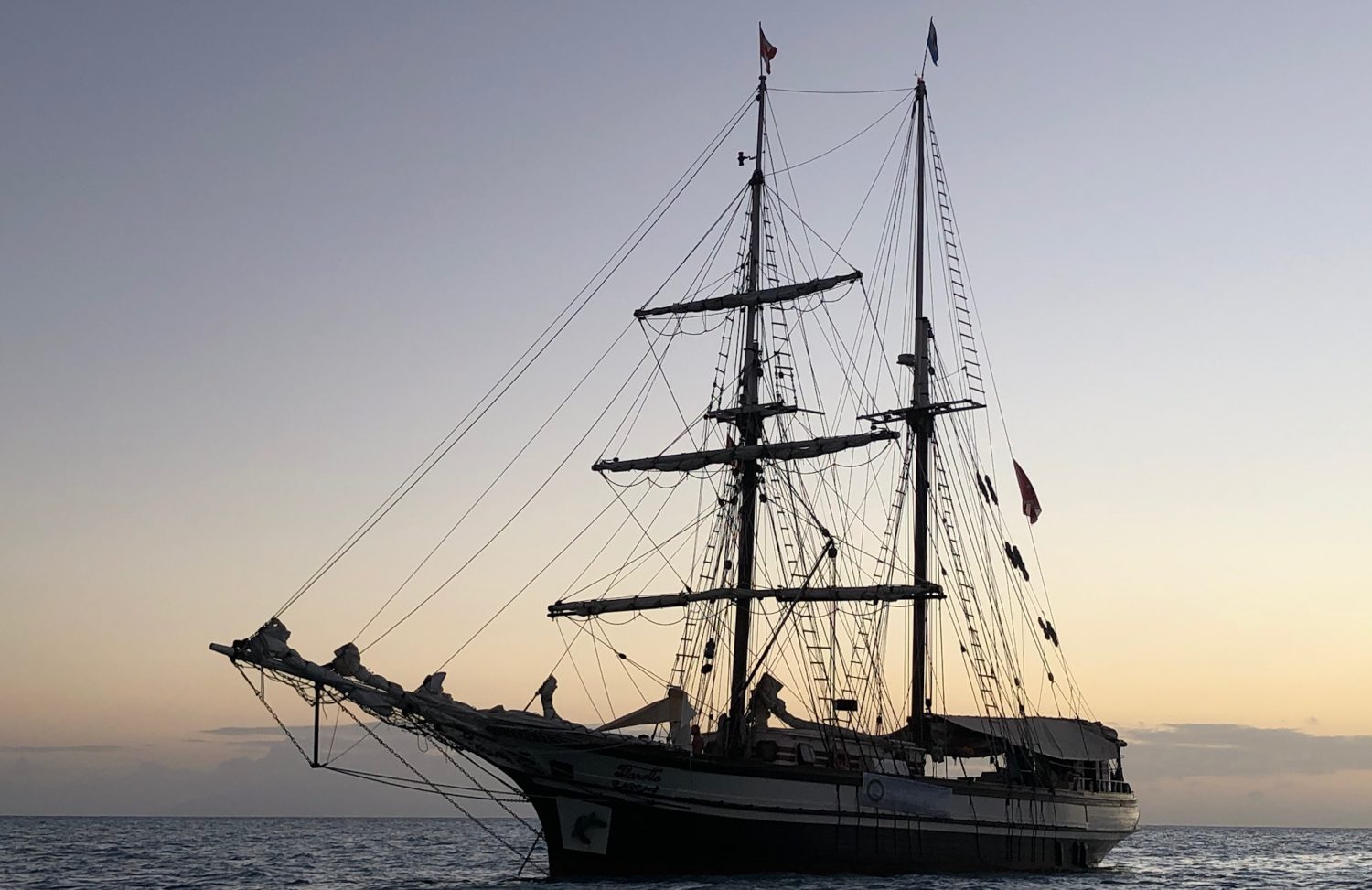Today was the last day of walking. I left the Southern Anchorage at 8:30 and headed to where I ended yesterday and set off in the morning chill and grey skies. It was meant to be a fairly easy day, but the wind was strong and I found that when I was on the bluff I needed to use my walking sticks to stay steady. The first decision point was about whether to walk along Wreck Beach, where two infamous ships had crashed in the late 1800’s. I was told the swells might be too big, even if the tide was low, so I smartly opted for the inland route. But the stories of the wrecks are worth repeating.
The Marie Gabrielle set sail from Foo Chow (now Hoi An) on September 5, 1869 with Frenchman Captain Blanchard in command, heading with a cargo of tea to Melbourne. In late November, the ship came across two aboriginals near death in a canoe, so rescued them, but the ship was then caught in the unpredictable inshore coastal currents. The captain was able to beach the vessel and save the crew by guiding it into a narrow channel. The men set off to find help without an overland trail to lead them. Eventually they reached the Cape Otway lighthouse and a group went to see what might be salvageable from the ship. While there were hundreds of lacquered tea chests floating in the sea, they were all considered a loss due to the salt water. Little remains of the Marie Gabrielle other than a few unrecognizable pieces of metal, nails and broken pieces of glass.
The Fiji sailed from Hamburg, Germany on May 22, 1891, commandeered by Captain William Vickers, with a cargo full of valuable general cargo. Despite being certain of the course, the Fiji ran aground on September 5, and was immediately pounded by relentless breakers. The lifeboats were useless and several attempts were made by the crew to swim to shore for help, with one attempt resulting in drowning. By the time help arrived, 10 crewmen had died, along with one man from shore who had attempted to swim out to help. The cargo began to accumulate on the beach and there were many looters and stories of drunken parties on Wreck Beach — much of the cargo was alcohol. Also on board had been 400 pianos, sewing machines and a load of toys for the upcoming Christmas holidays. It is possible to dive the wreckage of the Fiji from a boat; on shore is an anchor embedded near the wrecksite.
The track wound through sand dunes and heath until the Gellibrand River, which thankfully had a bridge to cross. The last section — about 7km — was above the sea and in some sections it was possible to see the beginning of what are now called the 12 Apostles. The rock stacks are the temporary remnants of retreating limestone coastline, formed by a mixture of sand and seashells deposited in an ancient seabed and later compressed, millions of years ago. Under constant attack by the sea the cliff faces are being eroded by about 2cm per year.
Of course to us mere mortals they are simply beautiful and wonderful to see. And for me they represented the end of a sometimes challenging but amazing solitary experience in the wilderness. And tomorrow I’m off again — next up, Queensland.
